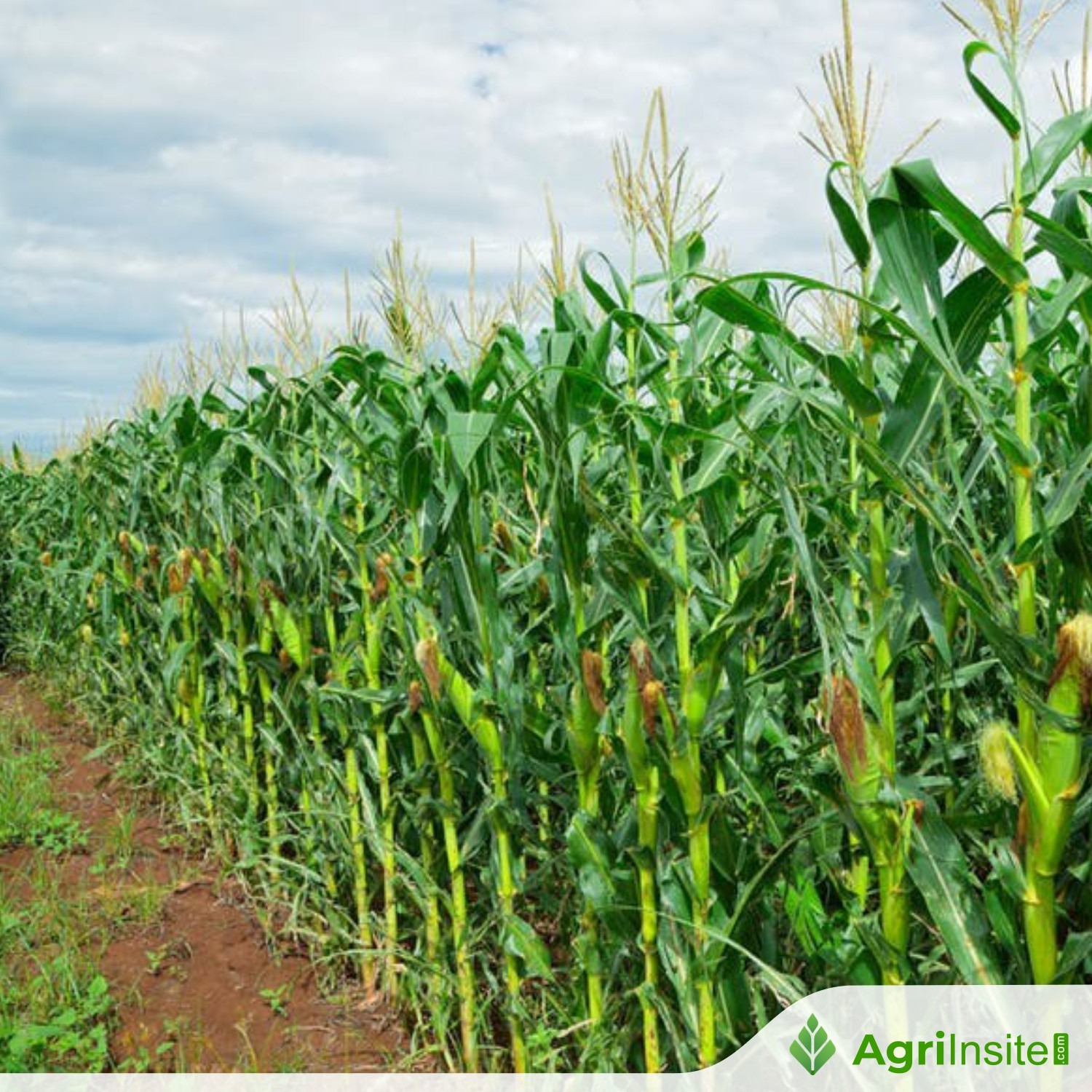Future of Maize Farming in India

India’s maize cultivation is growing, driven by rising demand for food, feed, and ethanol. Hybrid seeds, government support, and processing incentives boost production, targeting 42-43 MMT by 2024-25. Despite challenges like climate risks and market volatility, maize offers opportunities in value-added products, exports, and diversification into non-traditional areas, enhancing farmer incomes and supporting renewable energy goals.
30 December 2024, New Delhi: Maize farming in India presents a promising business opportunity due to rising domestic demand, export growth potential, and government initiatives to increase production. The market is expected to expand significantly in the coming years in the areas of high-yielding hybrid seeds, processing, and value-added products such as ethanol production. Maize production in India was estimated to be around 35.67 million metric tons in 2023-2024. Among maize-growing countries, India ranks 4th in area and 7th in production.
Nobel Laureate Dr. Norman E. Borlaug, the father of the Green Revolution, said, “While the last two decades witnessed a revolution in rice and wheat, the next few decades will be known as the Maize Era.”
The three largest maize-producing countries are the US, Brazil and Argentina. These countries dominate the global trade of 197 million metric tons of maize exported mainly to China.
Among the Indian states Madhya Pradesh and Karnataka have the highest area under maize (15% each), followed by Maharashtra (10%), Rajasthan (9%), Uttar Pradesh (8%) and others. Karnataka produces an estimated 12.5 million metric tons of maize annually, Bihar is the highest maize-producing state followed by Karnataka and Madhya Pradesh. Andhra Pradesh state has the highest productivity. Maize the queen of grains is an important source of raw material not only for increasing ethanol production but also for the growing poultry, animal feed, starch and other industries in India.
Key points about maize cultivation and its future in India:
Growing Demand: Maize is a staple food and animal feed, the demand for which is driven by the poultry industry, creating a consistent market for maize production. The demand for maize in India is very high and is expected to increase due to the government’s E20 order of blending 20% ethanol with fuel.
- Feed Industry: The feed industry is the largest consumer of maize, with about 60% of the total demand being met through maize.
- Starch Industry: The starch industry consumes about 14% of maize, which is used in sectors such as baking, pharmaceuticals, textiles and paper.
- Food Processing Industry: The food processing industry consumes about 7% of maize.
- Human Consumption: About 5 MMT of maize is consumed as food.
Production Capacity: Maize production is projected to increase significantly to meet the growing demand in India. The country has the potential to triple the current production. Ethanol Production: About 5.5 MMT of maize is expected to be used for ethanol production in the year 2023-2024. The government is targeting a 10% increase in maize production from 2022-23 to 2025-26. To meet the demand, India needs to increase production from 346 lakh tonnes to 420-430 lakh tonnes by 2024-25 and to 640-650 lakh tonnes by 2029-30.
Government Support: Government policies are promoting maize cultivation through initiatives to improve yield and productivity, including the adoption of high-yielding hybrid seeds and improved agricultural practices. Some of the ways to increase maize production include: offering a reasonable minimum support price (MSP), providing procurement assurance, providing transportation concessions, involving mega cooperatives in the maize value chain, and expanding the use of high-yielding variety seeds.
Ethanol Production: India has recently introduced a new policy to allow the blending of maize and grain-based ethanol under the National Policy on Biofuels (NPB) 2018. Further, the target for ethanol petrol blending has been increased manifold from just 1.53 per cent in 2013-14 to 10 per cent in 2021-22, 12.1 per cent in 2022-23 and is expected to achieve 20 per cent blending by 2024-25 and 30 per cent by 2029-30. Currently, grain-based distilleries are supplying an estimated 494 crore litres of ethanol to the oil marketing companies (OMCs) in the year 2022-23, mainly derived from sugar juice, sugarcane molasses and rice, which needs to be increased to 1,016 crore litres by 2024-25. The increasing focus on renewable energy sources opens up opportunities for corn-based ethanol production, which will further increase the demand. Potential Business Areas in the Maize Sector:
Seed Production: There is a need to develop and market high-yielding hybrid maize varieties suited to diverse Indian climatic conditions. The top companies producing and marketing maize seeds in India are Bayer AG, Corteva Agriscience, Kaveri Seeds, Nuzividu Seeds Ltd., and Syngenta Group. The demand for hybrid maize seeds in India is very high, and hybrid varieties are dominating the market due to their better yield potential, disease resistance and adaptability, leading to a growing trend among farmers to choose hybrid maize seeds over traditional open-pollinated varieties; currently, more than 60% of India’s maize cultivated area uses hybrid seeds.
Crop Processing and Value-Added Products: Several schemes are being operated by the government to set up facilities to process maize into products such as corn flakes, corn starch, corn oil and animal feed.
Contract Farming: Several processing facilities are being established to partner with farmers to ensure a steady supply of quality maize for processing. Contract farming has been introduced by the cultivating companies.
Storage and Logistics: A number of subsidy-based schemes are being offered by the Government to invest in storage infrastructure to manage post-harvest losses and facilitate efficient market access.
Export Market Development: Exploring opportunities to export maize to international markets, particularly in high-demand regions. Due to high domestic demand, India’s maize exports in 2023-2024 were 14,42,671.48 metric tons (MT), a decline of 58% in volume and 60% in dollar value compared to the previous year. The top export countries for maize from India in 2023-2024 were Vietnam, Nepal, Bangladesh, Malaysia, and Thailand. As a result of the growing domestic and international demand for this crop, India’s future for maize exports in 2025 may be promising.
Challenges to Consider:
Climate Variability: Maize is the crop of opportunity for future generations, while unsustainably increasing rice is leading to depletion of water table in rice growing areas in Indo-Gangetic plains, resulting in deteriorating economic and ecological conditions. With the introduction of high-yielding single cross, hybrid maize has become a profitable and most suitable alternative for rice replacement in irrigated conditions of Punjab, Haryana and western Uttar Pradesh in the Kharif season. As a result, there is an opportunity to expand areas in irrigated areas, expand maize in Rabi in Bihar, rice fallow lands with maize in Rabi in Madhya Pradesh, West Bengal, Odisha and northeastern states and spring maize cultivation after potato, green pea and mustard crop in northern India. Diversifying maize cultivation in these areas will increase production. Risk-free crop intensification which will also fit very well in the scheme of diversification and intensification of the maize-based cropping system. However, droughts and floods can significantly impact maize yields, requiring adaptation strategies.
Pest and Disease Management: To maximize yields, it is essential to implement effective pest and disease control practices for which a variety of non-chemical and chemical products are constantly being introduced in the market by various companies.
Market Fluctuations: Price fluctuations can pose challenges for farmers and businesses. To protect farmers from losses, the government has arranged for procurement at a minimum support price.
Overall, with its growing domestic demand, export potential and government support, maize cultivation in India presents a promising opportunity for future commercial ventures, especially by focusing on high-yielding varieties, processing and value-added products to increase farmers’ income.
To read more about Maize News continue reading Agriinsite.com
Source : Krishak Jagat














